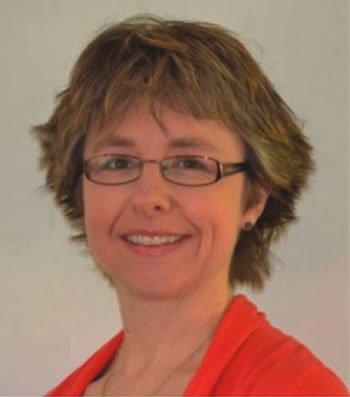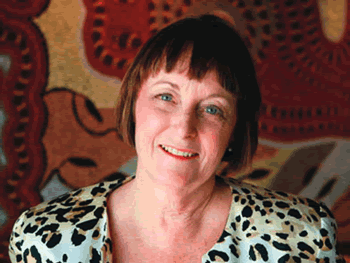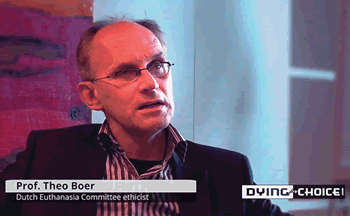Euthanasia – Dangerous Trends (1)

by Debra Vermeer
The practice of euthanasia and assisted suicide overseas has been a disaster, with so-called safeguards failing and doctor-assisted killing on the rise, and not just for the terminally ill, says world-renowned ethicist Professor Margaret Somerville.
‘It’s a mess, and a growing mess,’ she says.
Professor Somerville, who spent 40 years living and working in Canada, and most recently held two professorships at McGill University, in the faculties of Law and Medicine, has recently returned home to Australia to take up the position of Professor of Bioethics in the School of Medicine at The University of Notre Dame Australia, Sydney.
Her return coincides with the Victorian government flagging its intention to introduce legislation for assisted suicide later this year and reports that the NSW Parliament will also debate a euthanasia bill before year’s end. This follows the narrow defeat of similar legislation in the South Australian Parliament last November.

Professor Margaret Somerville
Professor Somerville was a prominent anti-euthanasia voice in the Canadian debate leading up to the introduction of ‘assisted dying’ (physician-assisted suicide and euthanasia) laws there last year, following a Supreme Court of Canada decision which found it was unconstitutional not to allow euthanasia.
She says that claims by Australian pro-euthanasia advocates, that euthanasia and assisted suicide is working safely overseas, don’t stand up to basic scrutiny.
‘Wherever it has been legislated there are very serious problems,’ she says.
In Quebec, Canada, where doctor assisted suicide has been legal since December 2015, a recent report on the first seven months of the law’s operation found that 262 people died by ‘Medical Aid in Dying’ – almost three times the number of deaths previously predicted by the Province’s Health Minister.
In 21 of those 262 deaths, or eight per cent of cases, the doctors had not complied with the law. Eighteen of the cases did not have the opinion of a second, independent doctor; in two cases, it was found that the person might not have been terminally ill; and in one case it was not clear that the person even had a serious illness.
‘Now when the law is brand new and you still can’t get doctors to comply with it, what hope have you got once complacency sets in?’ Professor Somerville says.
‘And one of the things that pro-euthanasia people argue is that euthanasia or assisted suicide will be rare. Well, 262 cases in just seven months is not rare.
‘Officially, around four per cent of all deaths in Belgium and the Netherlands are euthanasia or assisted suicide. Now if we translated that rate to the population of Australia, we’d have about 6,000 deaths by euthanasia or assisted suicide a year. I don’t call that rare.’
Professor Theo Boer has also expressed concerns about the explosion in numbers of people accessing euthanasia in Belgium and the Netherlands, and the growing variety of reasons other than terminal illness for which people are seeking euthanasia.
Professor Boer is a Dutch professor of ethics, who supported the legalisation of doctor-assisted dying, and was appointed to one of the five regional review committees set up by the Dutch government as a watchdog over the euthanasia laws when they were enacted in 2002.
He says that from 2005 to 2014 he reviewed close to 4,000 cases of assisted dying on behalf of the Netherlands Ministries of Health and Justice and believed it was working well.
‘But that conclusion has become harder and harder for me to support,’ he wrote in the Christian Century journal recently.
‘For no apparent reason, beginning in 2007, the numbers of assisted dying cases started going up by 15 per cent each year. In 2014, the number of cases stood at 5,306 - nearly three times the 2002 figure.’

Today, one in 25 deaths in the Netherlands is the consequence of ‘assisted dying.’ As well as those voluntary deaths, there are about 300 non-voluntary deaths annually, where the patient is judged incompetent.
‘Furthermore, contrary to claims made by many, the Dutch law did not bring down the number of suicides. Instead, suicides went up by 35 per cent over the last six years,’ he wrote.
Professor Boer also noted a shift in the type of patients who were seeking euthanasia. Both in the Netherlands and Belgium, patients need only be experiencing unbearable suffering, with no prospect of improvement, to access euthanasia. There is no requirement that the condition be terminal.
In the first years of the Dutch laws being enacted, about 95 per cent of patients accessing euthanasia or assisted suicide were in the last days or weeks of a terminal illness, but an increasing number of patients now seek assisted dying because of dementia, psychiatric illnesses, and accumulated age-related complaints, with terminal cancer now accounting for fewer than 75 per cent of cases.
‘In some reported cases, the suffering largely consists of being old, lonely or bereaved,’ he said.
Professor Boer believes that raising awareness about advances in palliative care is crucial in combatting the drive towards euthanasia, especially for people who have been scarred by poor palliative care of loved ones in the past.
‘For a considerable number of Dutch citizens, euthanasia is fast becoming the preferred, if not the only acceptable, mode of dying for cancer patients,’ he said via email.

Photo: Chris Scott
‘Although the law treats assisted dying as an exception, public opinion is beginning to interpret it as a right, with a corresponding duty for doctors to become involved in these deaths.’
If doctors refuse a patient euthanasia or don’t wish to be involved, there are now mobile euthanasia units in the Netherlands which will visit patients in their homes or nursing homes to administer the lethal drugs.
To be continued
 Entries(RSS)
Entries(RSS)